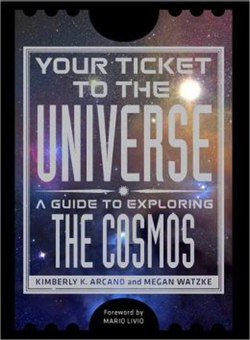Review: Your Ticket to the Universeby Jeff Foust
|
| The pace of the book, though, is understandable, like a tour guide trying to show off the entire contents of the Louvre in an hour. |
Authors Kimberly Arcand and Megan Watzke, who both work on NASA’s Chandra X-Ray Observatory mission, start the reader of Your Ticket to the Universe on Earth, grounding us figuratively and literally in the knowledge needed for later chapters. From there, they gradually move us out into the universe, starting with the Moon and Sun, and then the rest of the solar system. That’s followed by chapters on stars, the Milky Way, and clusters of galaxies.
The book is lavishly illustrated, with about 200 color images, both scattered among the text and in separate image galleries at the end of each chapter. With all of these images, and the modest length of the book, there is, not surprisingly, not a lot of room to delve into topics in any great detail. In the chapter about the solar system, for example, Mars gets a grand total of two paragraphs (Uranus, somehow, manages to get four paragraphs.) The pace, though, is understandable, like a tour guide trying to show off the entire contents of the Louvre in an hour. Still, there’s room for a wry comment or two: towards the end, the book includes a picture of a jar of mostly dark jelly beans, with a few brightly colored ones interspersed. “We’ve never been big fans of licorice-flavored jelly beans,” they write, “but putting that aside, this graphic helps show just how little normal matter there is in the Universe.”
Given that pace, Your Ticket to the Universe doesn’t have that much to offer to those who are already familiar with the basics of astronomy, and who are seeking more than a couple of paragraphs about a planet or galaxy. However, for someone who is seeking an up-to-date, well-written introduction to the cosmos, this book is a fine tour guide for that journey.
